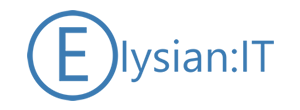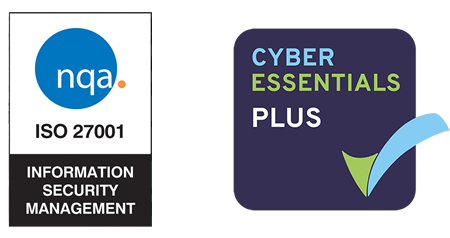
01256 976 650
ElysianIT Limited
Upper Farm, Wootton St. Lawrence,
Basingstoke, Hampshire, RG23 8PE
It’s no great news flash that Exchange Server 2013 will reach its end of support (End of Life – EOL) on April 11th 2023. Which sounds like an age away but if you haven’t already begun your migration project to either an on-prem upgrade, or into the cloud (Hybrid or Pure) then now’s the time to start planning.
But don’t worry there’s still time and whilst you’re planning Microsoft is continuing to release both CU and SU updates to ensure your solution doesn’t succumb to anything. With the latest (at the time of writing) being the KB5008631 release made on Jan 11th 2022 (KB5008631) (link).
What does EOL mean?
Before we jump into the options, let’s just clarify what EOL actually means so we’re on the same page. Most Microsoft products have a support lifecycle during which they get scheduled security updates, feature enhancements and those all important bug fixes!
The lifecycle of support is typically 10 years and as you’ve guessed it Exchange 2013 will hit its 10 year birthday in 2023, but perhaps for Exchange 2013 it’s not much of a celebration, as Microsoft will draw the line by not only stopping to role out any more new features but critically cease to provide 3 key services:
Technical support for problems
Bug fixes for issues
Security fixes for vulnerabilities
The good news, however, is that your Exchange 2013 instance will continue to run after this date, but no-body can predict how well and if history is a good teacher then typically the older unsupported products do tend to become a target for hackers as they know any breaches discovered won’t be patched!
My intention here isn’t to scare you into action, but just educate on the options to consider, with the first being to obviously do nothing. This does come with a level of risk, but that might be deemed acceptable depending on what you’re using your Exchange 2013 Server for and how critical it is to your organisations communication operations – other options are available which will require some forethought.
As a Microsoft Gold Partner, we’ve been assisting organizations successfully migrate from previous Exchange solutions for some time now and whilst this could simply be an on-premise upgrade process as the phrase goes:
Fail to plan, then plan to fail!
What are your upgrade options?
OK, so you’ve decided that it’s probably best to take some form of action, which in our opinion without knowing the intricacies of your situation is a wise choice. But there are a few points to be considered and it’s not as clear cut as some might have you believe suggesting it’s simply a case of migrate to Microsoft 365, which there are few approaches to depending on your situation or alternatively upgrade your on-prem to the latest version (Exchange 2019).
To better understand your options we’ll reflect on 2 potential scenario’s centred on where you might be now.
Scenario 1: On-Premise Exchange 2013
In this situation the upgrade options are potentially quite easy, with the simplest route, if you’ve not already engaged in any IT cloud adoption, to look into upgrading to Exchange 2019 on-premise. The upgrade process does still require planning, this should include a migration and deployment checklist, but can be achieved in-house. Microsoft has available an Exchange Deployment Assistant, which is effectively a wizard that will ask you a few questions on your current environment and generates a custom step-by-step checklist – worth a look even if you think you’ve got everything covered! Here are a couple of prerequisites to get you started:
- Make sure you’ve installed the latest CU.
- AD Servers must be hosted on Windows 2012 R2 Standard or Datacentre or higher or higher with AD Forest functionality.
- Make sure any hosted Windows 2008 R2 DC’s are decommissioned before.
The second option is to migrate to Office 365 (O365). Depending on your cloud adoption to date this might seem like an obvious next step, but before you jump straight in with the full pure online experience take a moment to consider your solution management. Exchange has an integrated interface for user management control, whereas O365 relies on the Power Shell. For some, this might not be an issue but for many the preference is towards the available interface, especially if that’s what you’ve been used to. For this you’ll need to embrace a cloud hybrid approach which includes an instance of Exchange 2019 for user management, either on-premise or in Azure.
A key point to consider when migrating your Exchange 2013 online is the migration approach. With 3 options available the one you elect to go with will depend on your situation:
- Cutover: < 150 mailboxes | Rapid migration
- Minimal hybrid: < 150 mailboxes | Slow migration
- Full hybrid: >150 mailboxes | progressive migration
Scenario 2: Exchange 2013 Hybrid
Having already commenced your cloud adoption, you’re at a better starting point by either owning an on-premise instance or it’s already in Azure. The options available to you are much simpler.
For those who have a cloud instance then there’s a smooth path of provisioning a new Exchange 2019 server, performing a switchover, and not to forget the decommission of the 2013 server once the migration is complete.
If you have an on-premise instance of Exchange 2013 then you could provision a replacement Exchange 2019 on a new server instance, which will likely require the later version of the Windows Server OS than your Exchange 2013 was running on, and then perform the migration and subsequent Exchange 2013 decommissioning. Alternatively, as the time is opportune, you could provision a new Exchange 2019 Hybrid server in Azure which removes your on-premise server requirements – surely worth consideration!
A final consideration – regardless of which approach works best for you, don’t forget your licensing requirements!




